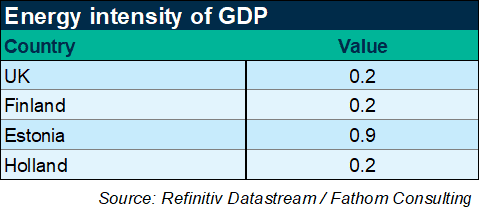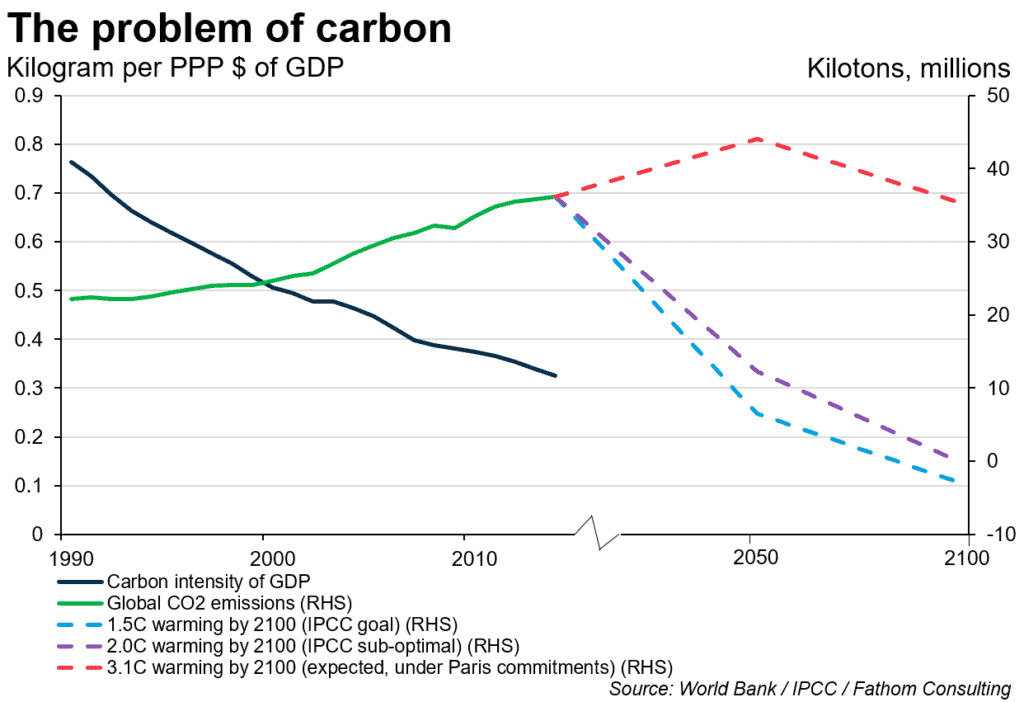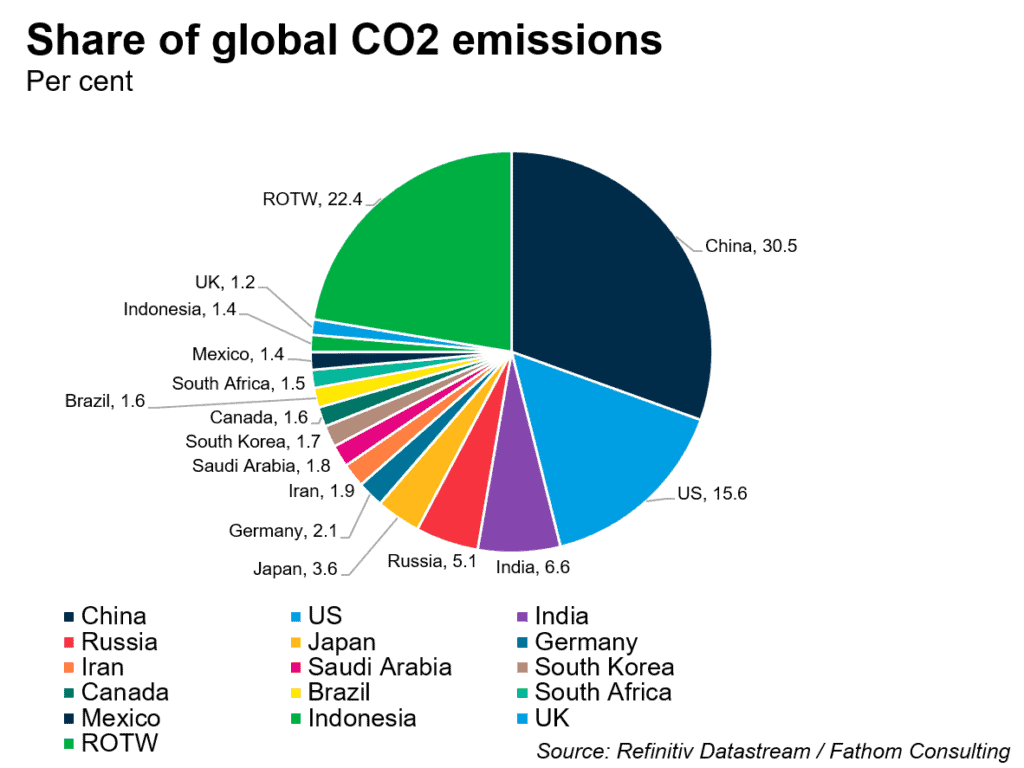A sideways look at economics
Most of us are locked at home and likely to be for some time, which has given us a moment to pause and think about the important things in life. Like how much we love our family and how much we value friendship. That was me in week one of lockdown. In week two, as I look out of my window at the plane-free sky over central London my mind has drifted to the climate and the recent reduction in CO2 emissions. And to stag parties, with the realisation that the one I am meant to be going on in May is unlikely to go ahead as scheduled. A bachelor party over Zoom is an alternative, and would be better for the environment, but not much fun. The May date will almost certainly need to be postponed, which got me thinking: is possible to go green, while still having fun?
To answer this, I look that the footprint of my own stag party last year using the carbon footprint calculator on carbonfootprint.com. Now they say that what happens on a stag party should stay in the stag party, but nobody said that what happens on the stag party should not go into TFiF. So, in order to respect the code, while disclosing important climate-related information to the broader community, some poetic licence may have been used in the list below.

From the climate point of view, this does not make for pretty reading. The cumulative CO2 emissions generated by the two-day event were almost 10 tons, more than the average 6.5 tons generated by the average UK household in one year, and way more than our 2-ton annual target to limit global warming to safe levels. Admittedly, I included the activities of all twelve people on the trip — but that still works out to an average of nearly 1 ton per person. Extravagant.
Admittedly, there was some wastage on unnecessary items such as the Pamela outfit and the whip. But removing them would have only reduced the total emissions by 0.05 tons. Shots bought by Dima have a combined carbon intensity of about 0.5 tons, but they were important items so need to stay. Cutting out the drinks and massive barbeque at Andrea’s house would have also reduced the total by about 0.5 tons, but that was fun too, even though it resulted in me being a wreck on day 1. There was plenty of energy generated during the event, from things like Ed’s shirt and his moves on the dancefloor, which could have lit a small city for an evening if connected to the grid. Unfortunately, they weren’t. It turns out that the flights alone accounted for 7 tons, or 69% of the total.
The good news is that European countries are investing in their rail networks, making travel by rail (massively more environmentally-friendly than flying) quicker and more affordable. This year, for example, the Eurostar started running services from London to Amsterdam, a potentially good stag destination. Another sliver of good news is that the emissions intensities of many of the non-air travel items on the list are being reduced. This is because a large chunk of the CO2 emissions from goods and services come from the electricity and fuel involved in the transport and provision of those goods and services. The cleaner a country’s energy mix, the lower the emissions of anyone doing any energy-consuming activity in that country.
To my surprise, and disappointment, the CO2 intensity of GDP is much higher in Estonia than the UK, Finland or Holland. And this is not because it is a major oil-producing nation. It is because Estonia uses mainly oil to power its grid, as opposed to cleaner forms of energy such as natural gas or the renewables used in other European countries. What this means is that the CO2 estimates of the activities in my table are probably understated since they used ‘dirty’ Estonian electricity in their manufacture instead of cleaner electricity assumed by the UK-based carbon footprint calculator.

There are a few lessons here, and things to be considered if you want to be a broflake and go green. First, there is nothing wrong with being a broflake and caring about the environment. Second, to have any chance of having a carbon-neutral stag party, it needs to be closer to home, or one that you can get to and from by train. Third, it is important to consider where goods and services come from and how much energy was used in their production (the energy intensity of GDP is a crude, but decent estimator of this): better to go to that club lit by wind, rather than the one lit by oil.
Finally, there is a chance to offset emissions by donating money to a project that does something to reduce the amount of CO2 emissions going into the atmosphere or something to absorb some of the CO2 emissions that have done into the atmosphere. On carbonfootprint.com it would cost about £60 to offset 10 tons of CO2. But this is not a panacea. First, it isn’t an entirely positive activity to reduce the effects of something bad, that shouldn’t have been done in the first place (I’m not saying that my stag party was bad, I’m referring to some of the offset projects which help clean up some things that shouldn’t have been allowed in the first place). Second, offsets using trees consider the amount of CO2 that those trees will absorb over their lifetimes. Of course, planting trees is better than not planting trees. But to stand a chance of limiting global warming to 1.5C above pre-industrial levels, the level deemed safe by the IPCC, we need to reduce global annual emissions fast; we cannot keep emitting and wait for those emissions to be absorbed over 30 years. And third, a recent study showed that trees may not be absorbing as much carbon as previously hoped. () I suspect that it would take a sum significantly higher than £60 to really offset 10 tons of CO2 emissions.

The bottom line is that my stag party was anything but green. The good news is that I am now a lot more aware of these issues, and more conscious about how we can reduce our carbon footprint, than I was when I had my stag party. For future stag parties, when asked, I will suggest that we travel by train, if possible. I have also taken these lessons onboard in other aspects of my life and travelled by train to and from my skiing holiday in Austria this year to keep my emissions down, as well as making a significant payment to carbonfootprint.com to offset the emissions generated by my wedding and honeymoon last year. I will make a further contribution for offsetting some of my stag activities.
Of course, some travel by plane may be necessary, including going on stag parties, but if we all take some small actions to cut emissions in the rest of our lives, and use our carbon budget wisely, collectively, we can move towards the levels needed to limit global warming to safe levels. Planting trees is good, but keep in mind that this, alone, is not enough to solve the problem of global warming. The bigger picture is that the US, China and India alone account for more than 50% of global CO2 emissions. To stand any chance of achieving the IPCC’s 1.5C goal, it is essential that these countries embark on an energy revolution, switching from dirty forms of energy, especially coal, into cleaner forms of energy. This is a global problem, which will require global solutions, and everybody needs to play their part. The three aforementioned countries will need fiscal stimulus to support their economies in the wake of the coronavirus slowdown — contributing funds to kick-start a green energy revolution, creating jobs, protecting the environment and helping stag parties go green, would be a good use.
